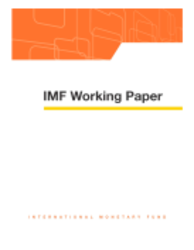
The Macroeconomic Effects of Natural Resource Extraction: Applications to Papua New Guinea
WP/13/138
To investigate the effects on Papua New Guinea's economy of substantial liquified natural gas revenues arriving in 2015, we employ a model to examine the macroeconomic effects of a scalingup of natural resource windfall revenues and the implications for a variety of policy responses. The model is a multi-sector dynamic stochastic general equilibrium (DSGE) model, and features components that allow for a detailed study of the effects of both fiscal and monetary policy in response to a positive shock to the mineral resource value of a country. The model contains tradable, non-tradable, and mining sectors, as well as an independent central bank and fiscal authority. We calibrate the model to the current economy of Papua New Guinea and run a suite of policy simulations. We find that macroeconomic effects from a resource boom typically associated with Dutch Disease effects such as a real appreciation and a fall in tradable sector production stem largely from the non-tradable component of government spending. The central bank can offset the real appreciation, but not without crowding out the private sector. A sovereign wealth fund (SWF), combined with a smooth capital spending path, entails the best means of dealing with macroeconomic volatility and maintaining a stable fiscal regime.
Publication date: May 2013
ISBN: 9781484321379
$18.00
Add to Cart by clicking price of the language and format you'd like to purchase
Available Languages and Formats
| English |
Prices in red indicate formats that are not yet available but are forthcoming.
Topics covered in this book
This title contains information about the following subjects.
Click on a subject if you would like to see other titles with the same subjects.
Papua New Guinea , natural resource , resource-rich developing countries , DSGE models
Also of interest
Summary
Copyright © 2010 - 2025
Powered by:
AIDC



